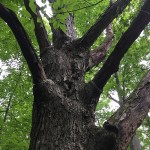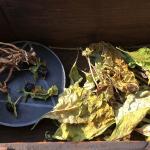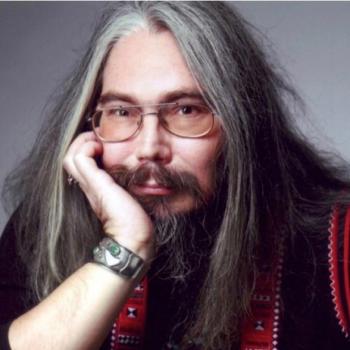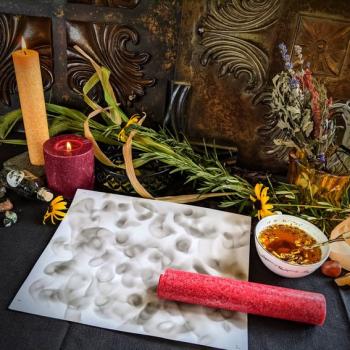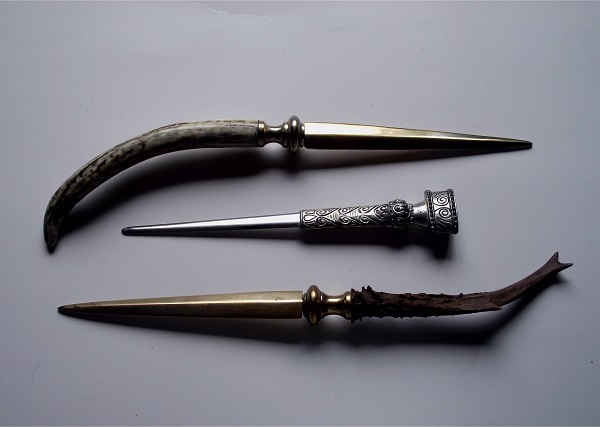
Replaceable Everyday Objects or Priceless Ritual Artifacts
Witchcraft as the name implies is a craft so called because like any other craft it consists of regular practice. It is the practice of discovering and learning to work with hidden power, by direct experience of the interplay of forces at work within the Universe. Tools are also part of any craft, the Craft of the Wise included. However tools are our instruments meant to concentrate, hone, and direct these powers more efficiently. Acquiring or making tools is meant to be part of the individual ritual practice of the witch, each tool with its own secrets to teach. These artifacts are only vessels for the power of the symbols they carry. The rituals of consecration and empowerment are also part of that process, creating another layer of experience for the practitioner. So it isn’t the physical object of the tool itself that is important. What makes it powerful and strengthens its bond with its keeper is the power of experience of repeated use. Many traditions today, influenced by Western Esotericism put emphasis on the ceremonial tools of the magician, representative of the four elements. The complex rituals of preparation undergone create powerful magical artifacts.
Those with a background in folk magic are familiar with using those tools on-hand, more for their utilitarian purpose than their symbolic meaning. The tools of classical witchcraft often doubled as common household items concealing their arcane purpose. Now that we are no longer persecuted for our beliefs, or put to death for our practices, we are able to exist more openly. This new acceptance of magical practices, while often completely misunderstood by outsiders, allows us a means sharing information and practices with one another. We no longer have to shroud our light in shadow, we can allow it to act as a beacon to attract others, like moths to a flame. The Internet connects practitioners from around the globe like never before, fertilizing and enriching all those involved in a genuine dialogue. This has created a kind of global magical community with a diverse collection of culturally unique practices.
The collective community continues to grow, and has reached a point where it has begun to attract the attention of more and more outsiders and genuine seekers. This widespread interest in occultism and magical practice through the advent of the New Age Movement has raised the demand in the magical marketplace. This rise in demand has made the business of occult supply shops more sustainable, and has also helped bring many talented artisans to prominence within the community. Many individuals share a similar dream in the magical community; being able to support themselves through their own practice. Whether that role be an herbalist, alchemist, teacher, or poet, our practice is often closely aligned with our deepest passion, and to utilize that passion to support oneself is a goal most satisfying when achieved, but can leave feelings of inadequacy when unfulfilled.
Artists and Originality in the Occult Community
We all have some creative ability, but not everyone is meant to be an artist and no one can be a master of all things magical. There are certain individual artisans of the Craft whose area of specialization creates a one of a kind synthesis with their individual practices. These are the true masters of the forbidden arts. To many practitioners still it is paramount to procure one’s own tools and prepare one’s own formulas, thus incorporating their individual essence and magical power into the object. I believe that the majority of witches are innovative and artistic enough that they prefer creating their own artifacts, to an extent. However, not all practitioners are master blacksmith’s or adepts at complex alchemical processes. Seeking out specialized practitioners has been made much easier in this technological age. I think that one witch commissioning another for their work and expertise is a beautiful thing that has come from the wider acceptance of the modern world.
That being said, many practitioners simultaneously begin their path as artists as well, both qualities often inherent at birth. Oftentimes the two are indistinguishable, one being incorporated into the other as the practitioner grows in experience. Those who are true masters of their art must be sought out. They create, not for profitable reproduction, but for the experience that each individual working brings. While each of us is a master or mistress of one’s own arte , there are those whose proficiency in a given area is apparent. Artifacts and formulas created by other practitioners maintain their own unique powers, and serve to strengthen the bonds between our community. For every artist offering something different to our interpretation of individual magical practice, there are a handful of “magical suppliers” following a one-stop shop model for everything magical. Many of these feature inexpensive herbal preparations, candles, crystals and all other manner of that which can easily be found. Many of the simple recipes used are easily found and recreated by any practitioner. The majority of these shops are harmless enough providing resources for beginning practitioners, often having brick-and-mortar counterparts that continue to support their local communities.
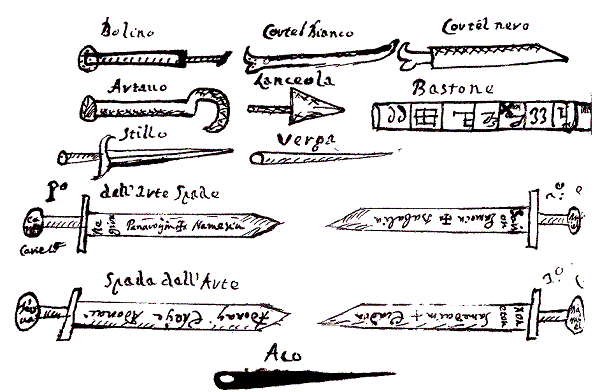
“Traditional Witchcraft” and The Poison Path
There is a movement within the magical community that I believe is an attempt to distinguish oneself from modern New Age folk magic practices as well as the traditions of Wicca, and emphasize the practices of the medieval and early modern periods. The imagery and symbolism of the Witches’ Sabbath and the use of infamous flying ointments has become a central area of study for many non-Wiccan practitioners. The increasing popularity of the notion of the Unguentum Sabbati of medieval witchcraft has led many practitioners to delve into the murky depths of witch trial accounts and records of entheogenic ointments used by physicians that contained the alkaloids of well-known witches’ herbs.
Recent publications over the past twenty-years have shed more light on a once obscure science of close kept secrets, that has become known as the Poison Path. There is an ever growing body of information online in regards to the Crooked Path, fed by personal experience and spirit congress. The goal of the path being mutual partnership with the verdant spirits of the plant realm so that knowledge, power, and essence is exchanged.
When working in a spiritual context there is often a fine line between universal sacred symbolism and one’s individual artistic license. Many symbols, concepts and preparations that have become common knowledge in the magical community serve as universal symbols that have been used by different people for different reasons over the course of history. There are also symbols and concepts of arte given directly to the individual through contact with the spirit world. While the tools of our craft are for us all to use, especially those gifts of the natural world who belong to no one and anyone; the way we arrange and utilize these symbols is unique to our individual practice.
There are some individuals looking to capitalize on the increasing demand for Witches’ Flying Ointments and the Baneful Herbs that create them. One of the main issues I take with this practice is that dosage depends on a number of interrelated factors. Mass produced ointments are unreliable in their efficacy and concentration. Preparing an ointment that would work on most individuals would require a dosage that would be too dangerous for some. Purveyors of such ointments must either accept the risky liability or prepare ointments with homeopathic doses. Supplying these powerful tools to the community at large is irresponsible and antithetical to the practice of witchcraft.
In addition to obscure formulas and hard to obtain botanicals, the school of “traditional” witchcraft has some specialized tools not found in the initiatory traditions of Wicca. Many of these classical items such as enchanted books, the infamous toad bone and stang have roots in the diverse schools of folk magic and are coveted by traditional and modern practitioners alike. Magical artifacts of this caliber are usually unique to the practitioner, the inventions of magical artifice are intricate combinations of material and magic. This is the area of the Artificer, the term I use to describe those uniquely gifted at creating magical objects. However, when purveyors of occult supplies take these masterpieces and use them as inspiration to create mass produced copies, the forgery is apparent in the lack of magical nuance contained in the copy.
A Traitor Amongst Us
I watch and I listen. I will always help a brother or sister witch in need. I observe the interactions amongst others, the relationships that are formed and what results from those relationships. I love sharing information with others, and providing them with resources to help further their own studies. I will point anyone who approaches me in the right direction, but it is up to you to do the work just like the rest of us. My writing provides the means for my ideas to reach others, and serve as a resource when I can. There are many other great and reputable resources far more adept than myself, and I continue to aspire to be such a resource for the community. However, when I notice that the hard work and years of experience of practitioners being exploited and used by adolescent witches to turn a profit; I can no longer remain an observer in the shadows.
We have been betrayed. There is one amongst us in particular who has used many of us without our knowledge. This individual has reached out to many practitioners over the years under the guise of networking and partnership. Methodically harvesting our hard won knowledge and experience to benefit themselves. Seeking those with apparent knowledge and an existing reputation, so that like a parasite they may feed themselves. Seeking not only our occult knowledge, but also our resources and contacts in the greater community; we have been collected. Artist’s creativity has been usurped as if its spiritual nature makes it community property. Not an artist creating single works, but a supplier of mass produced goods has attempted to turn our sacred tools into a commodity. I see bits and pieces from many of us being sold in their shop; recognizing where the plagiarized inspiration came from.

